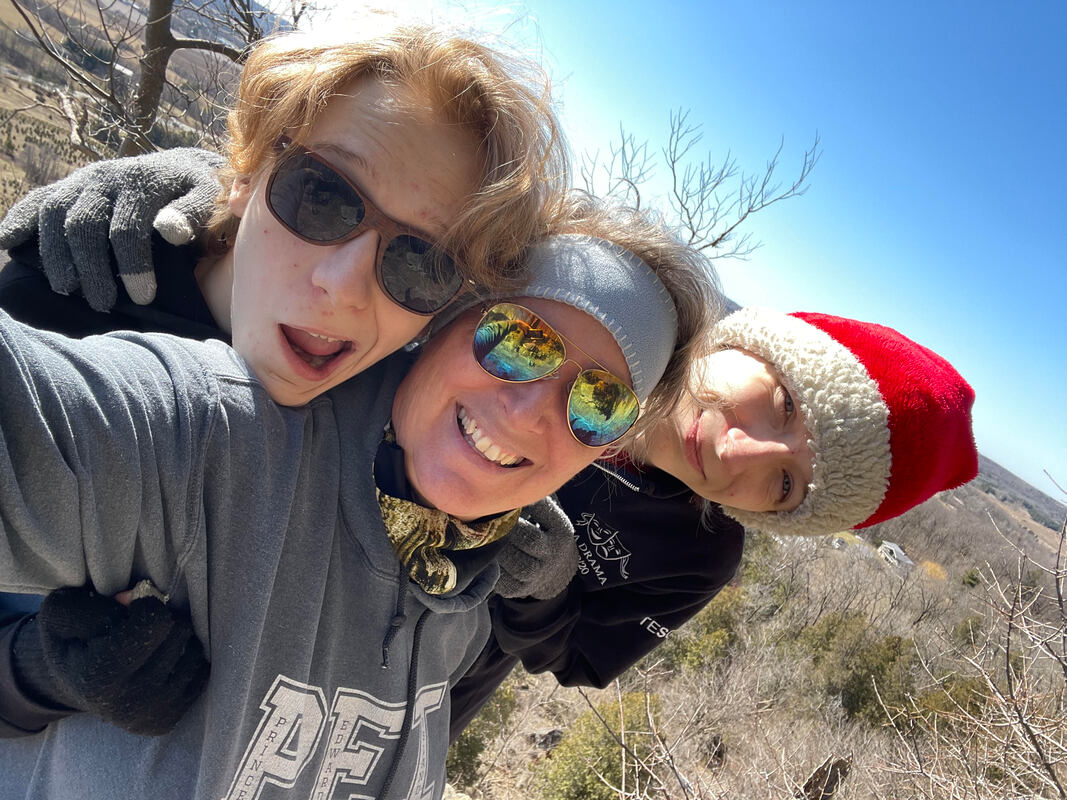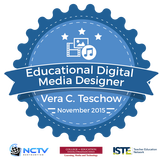I’ve been thinking about this question a lot, as I think back to my time as a classroom teacher, and reflect on how my practice changed over the nearly 20 years I spent with students before moving to a permanent position as a public servant with the Ministry of Education. In particular, as a parent who is too often underwhelmed with the practice I observe through the experiences of my own children in the school system, I am compelled to consider what, specifically, is the difference between a good teacher and a great teacher. (And perhaps more poignantly, was I ever the latter?!)
The more I learn about the roots of public education (how many of you knew that it was originally intended in many places as a tool of eugenics, not much different in purpose from the residential school system here in Canada?!), the more I am convinced of the truth of Michael Fullan’s suggestion from his book, Stratesphere, that we are nearing the end of our current system’s useful life. (Some might argue, we’ve long exceeeded its usefulness... and yet, in many places right here in this very province, the factory model and all its accouterments continue to shine as an exemplary model of mediocrity!)
So, then, one must ask, what IS the purpose of public education, if not to inculcate the youth of a society with the cultural mores of that society? What is it that we want/need kids to learn?
One problem I’ve observed as a parent, a classroom educator and a system leader in various roles is our lack of courage to ask these very questions: What is our purpose here as a larger system? Why are we doing what we are doing? What are we hoping to achieve?
Though I know enough now to understand that things are a little more complex than I understood them to be as a new teacher some 20 years ago, I still believe in the potentional for public education to act as an opportunity for universal access. In my ideal world, any student, anywhere could get what they need from a public education system, and use it to lift themselves out of their current situation, whatever it may be, and into a situation that allows them to fulfil their potential. It also allows them to realize the moral imperative of lifting one another up and supporting one another in achieving their potential, but removing barriers they have the power to remove for one another.
But as I am coming to realize, this requires incredible insight and humility on the part of classroom educators and school and system leaders, and a willingness to make themselves (ourselves) vulnerable as we examine the probably enormous unearned privilege, in most cases, that brought each of us to a job in public education.
When I think back to my early years of teaching, I now finally realize just how NOT “woke” I was. Despite thinking I was, and wanting to be. I was a good teacher, but I wasn’t great. I know this because I can think of specific students whom I did not serve well.
There are numerous examples (more in the earlier years and fewer in later years, I think) of students to whom I spoke more harshly than I should have, with whom I was more impatient than I should have been, and for whom I just really lacked a deep understanding of the barriers they faced within the system that had (mostly) advantaged me, and which I — in the very act of being a school teacher — was contributing to upholding.
And there is a more general shortcoming, too. An eager learner and quick study, early in my teaching career, I was already doing many of the things the “good” (well, decent at best, in some cases, I would argue — but I know I’m judgy!!) teachers my own children have do now: I photocopied packages of handouts like crazy, communicated detailed unit plans with parents, and shared specific, graphic, classroom management and behaviour plans with my students and their families. And they loved it, because they didn’t know any better.
It wasn’t until my latter years as a classroom teacher that I began to let go of some of my obsessiveness about my classroom, and began to focus on the students rather than the program. I developed outlines, but left the details to be fleshed out with my learners. I moved away from assigned seating and more into daily circle time (yes, even for intermediate level students!) followed by self-selected seating in one of many work areas around the classroom. I allowed math to flow into language to flow into social studies and back into math again... and while I read with some students, others worked on an art project, or researched something they were interested in from an earlier conversation in social studies, or helped a peer figure out how to upload an assignment into the new online classroom we were all figure it out how to use, or went to the contained class and read with kids who had ASD.
Imagine the chaos! It was beautiful... and the vast majority of the students in the class were engaged.
One of my proudest moments in my last few years was an ongoing series of lessons in which the students and I wondered about and researched the social impacts and mathematics of refugee migration; we looked at a group of Syrians who were walking through Europe to reach what they hoped would be a “safe” destination. I did not choose this lesson because it was part of a textbook or course outline. I chose it together with the students, many of whom had come to Canada as refugees and immigrants themselves from the Middle East, in response to current events they where talking about at home, and in partnership with other teachers in my building, and the instructional coach whose time and expertise I frequently begged for. The lessons incorporated estimation, unit rate, geography and history, literacy, and pretty much all of the learning skills and work habits teachers have to report on in elementary and secondary school. It was a powerful time of learning for all of us.
Other proud moments:
1. Letting kids nap in class if needed (we had an old couch in the reading corner of our Grade 3 classroom, and I remember one frequent flyer in particular, whose mother got him up at 4:30 every morning to get on the bus to the babysitter’s, before heading off to work — again on the bus — at the other end of town for the day... he was out like a light nearly every day between about 9:30 and 10:15, and after that, he was ready for learning.
2. Developing and delivering a data management and probability lesson with some Grade 8 students, on the incidence of carding for black citizens in the GTA.
3. Figuring out, with the Grade 6 students I was teaching, how to use Google docs, so that we could work with a group of Grade 5 students at a school in Australia, on a cross-cultural financial literacy project.
Decentralizing my approach to what happened in the classroom where I taught was challenging. Firstly, I was rarely able to reuse a binder of “activities” from year to year, because needs and interests evolved as the world did! And I frequently had to consider what was non-negotiable (which concepts and skills did students HAVE to learn, both in order for me to have met the mandatory teaching objectives of the curriculum, and also so that I could rest secure in the knowledge that I was equipping students with the tools they needed to succeed after they left our classroom), and what was “up for grabs”, so to speak (I.e. HOW they could learn it). This meant I really had to get to know the learners in the class, and become comfortable with letting them choose their path, rather than micromanaging everything.
When I look at what makes me most angry in some of the classes my own two kids have to contend with, it’s the complete lack of autonomy they (the learners) have. Everything is centralized, there is little or no differentiation in pedagogy or assessment, and any suggestion that perhaps there could be is met with stubborn resistance on the part of the teachers in question. The teacher seems focused on covering content rather than facilitating learning. It’s a hard pill to swallow, watching one’s own children die of boredom or frustration, when I have seen how successfully letting go of a little power served the students I worked with.
Like I professed to when I first became a teacher, I still believe strongly in equity and social justice, and in public education as a tool to achieve those things. But now I know that shifting my focus from myself and my “needs” as a teacher, to the students in my care, is the only way to move from good to great. Shifting the focus is the only way to become the sort of teacher who facilitates the kind of classroom where equity and social justice are alive and well as students struggle, negotiate and collaborate with their teacher and with one another to meet their true potential, different for every child, different every year in every classroom.
How I wish more educators would discover and embrace this secret to greatness!




 RSS Feed
RSS Feed